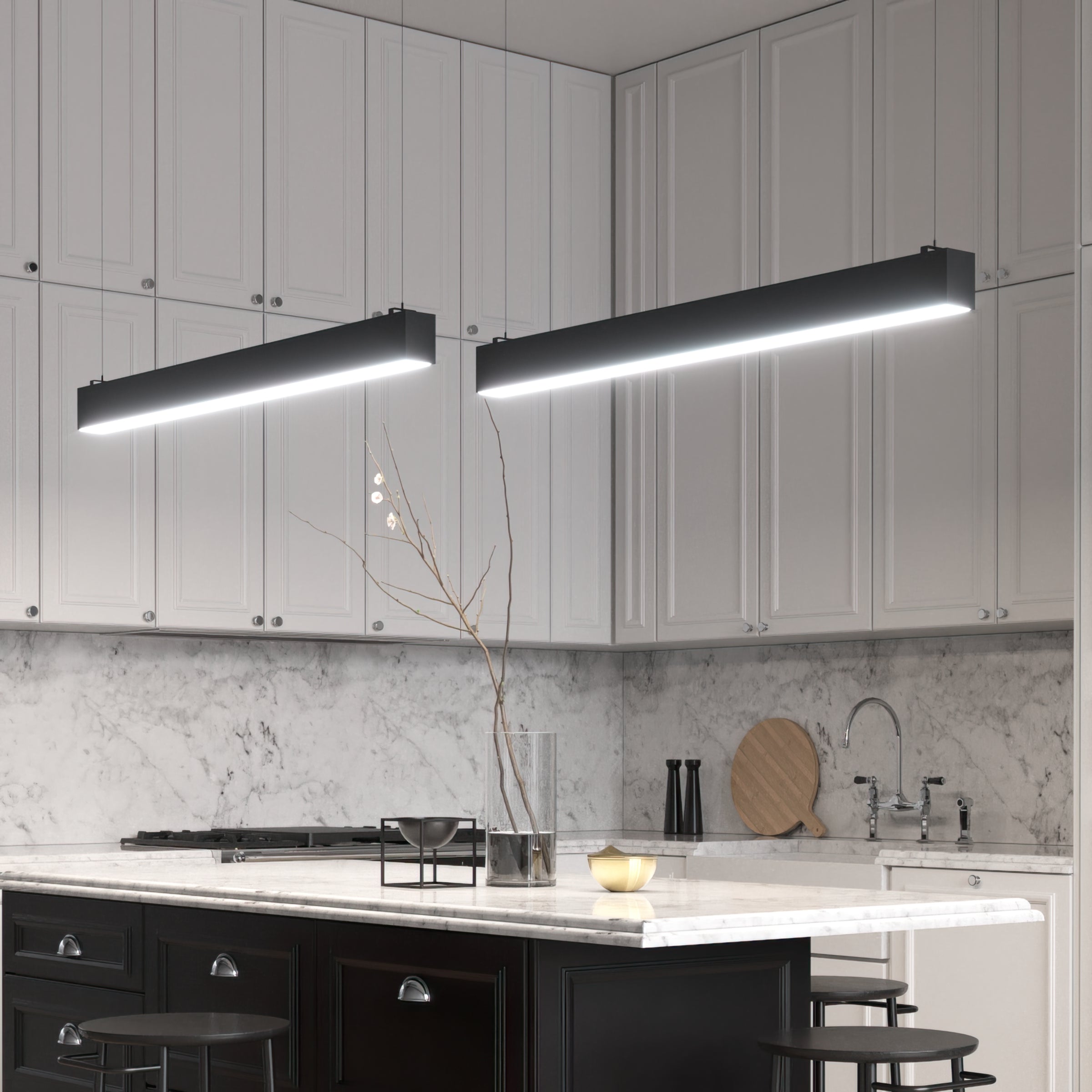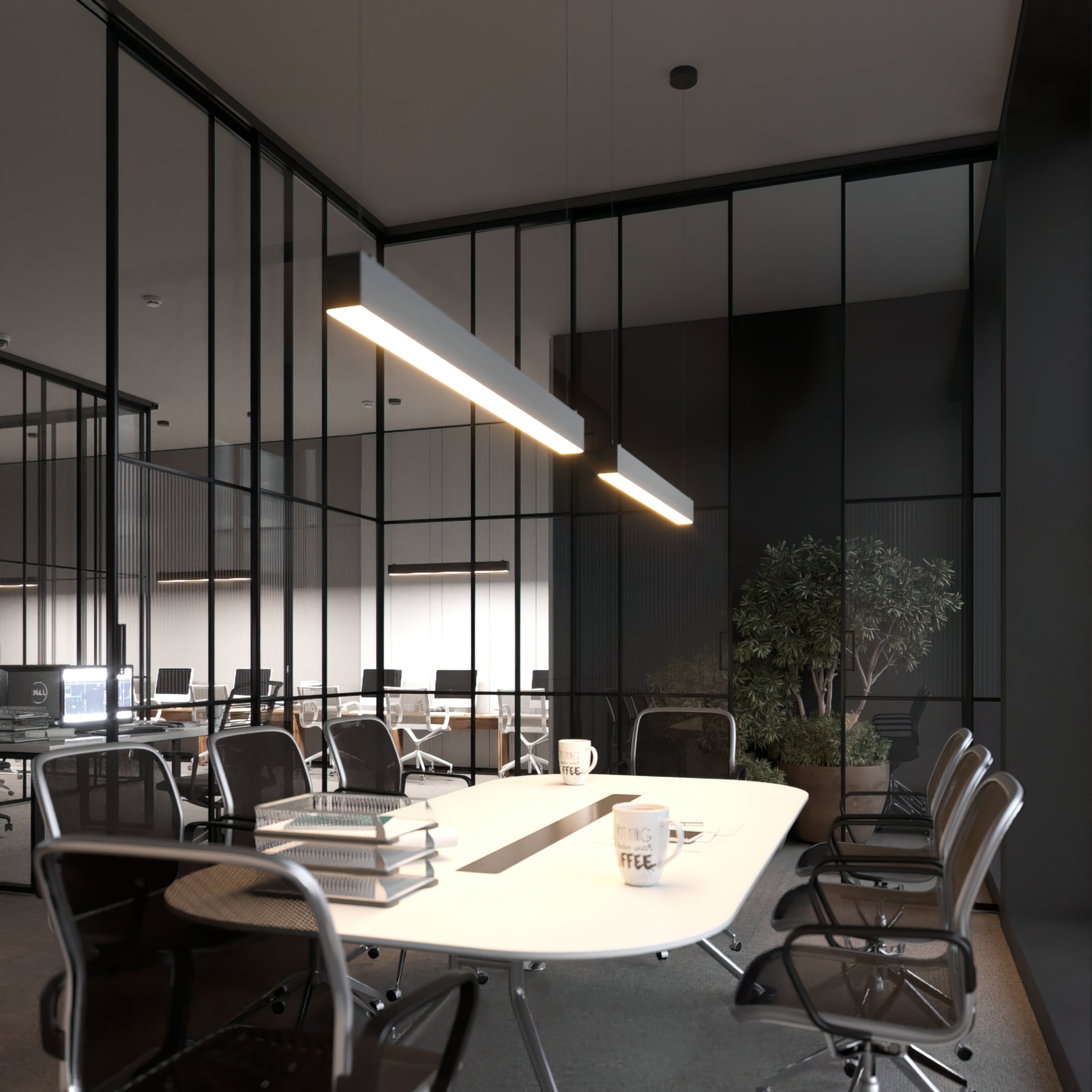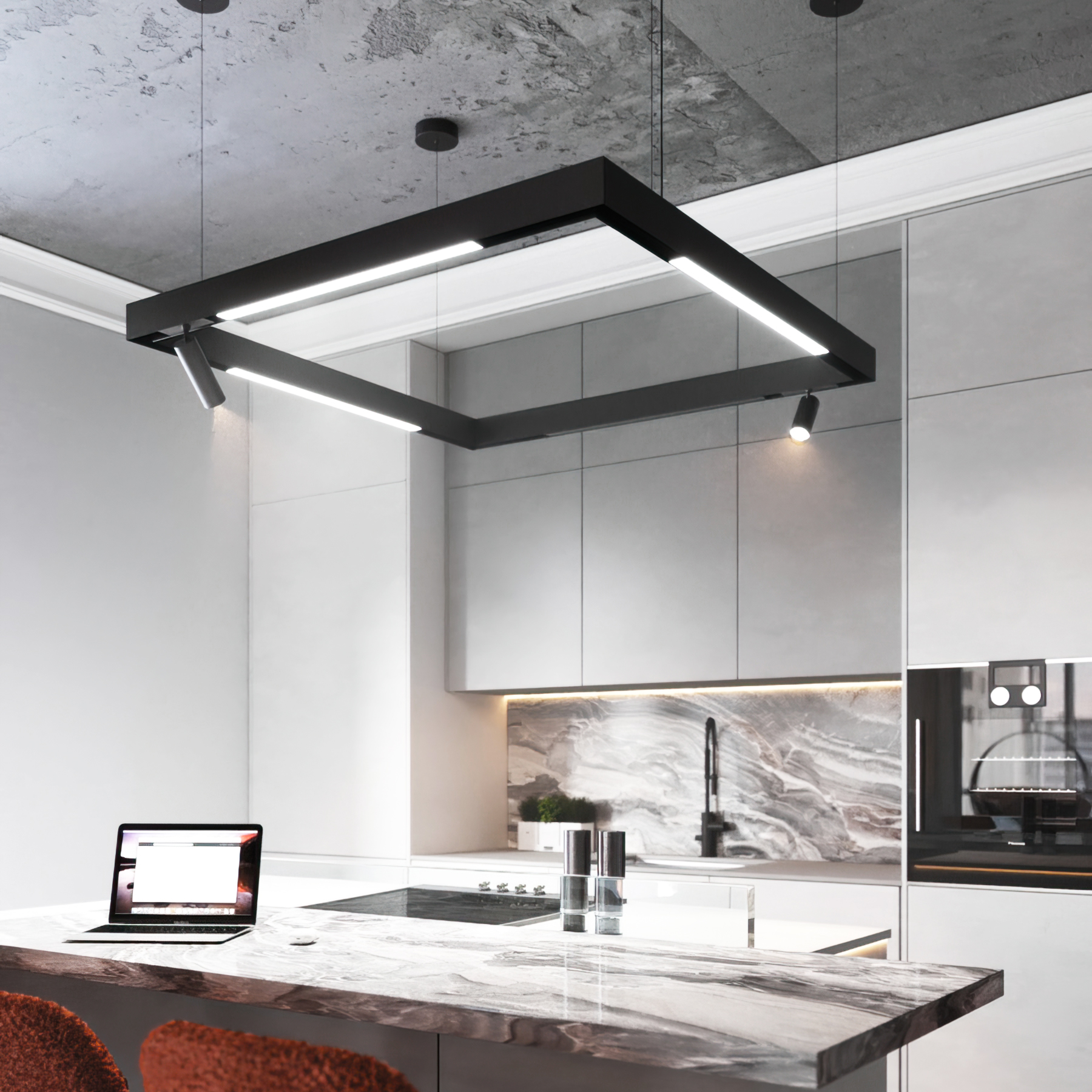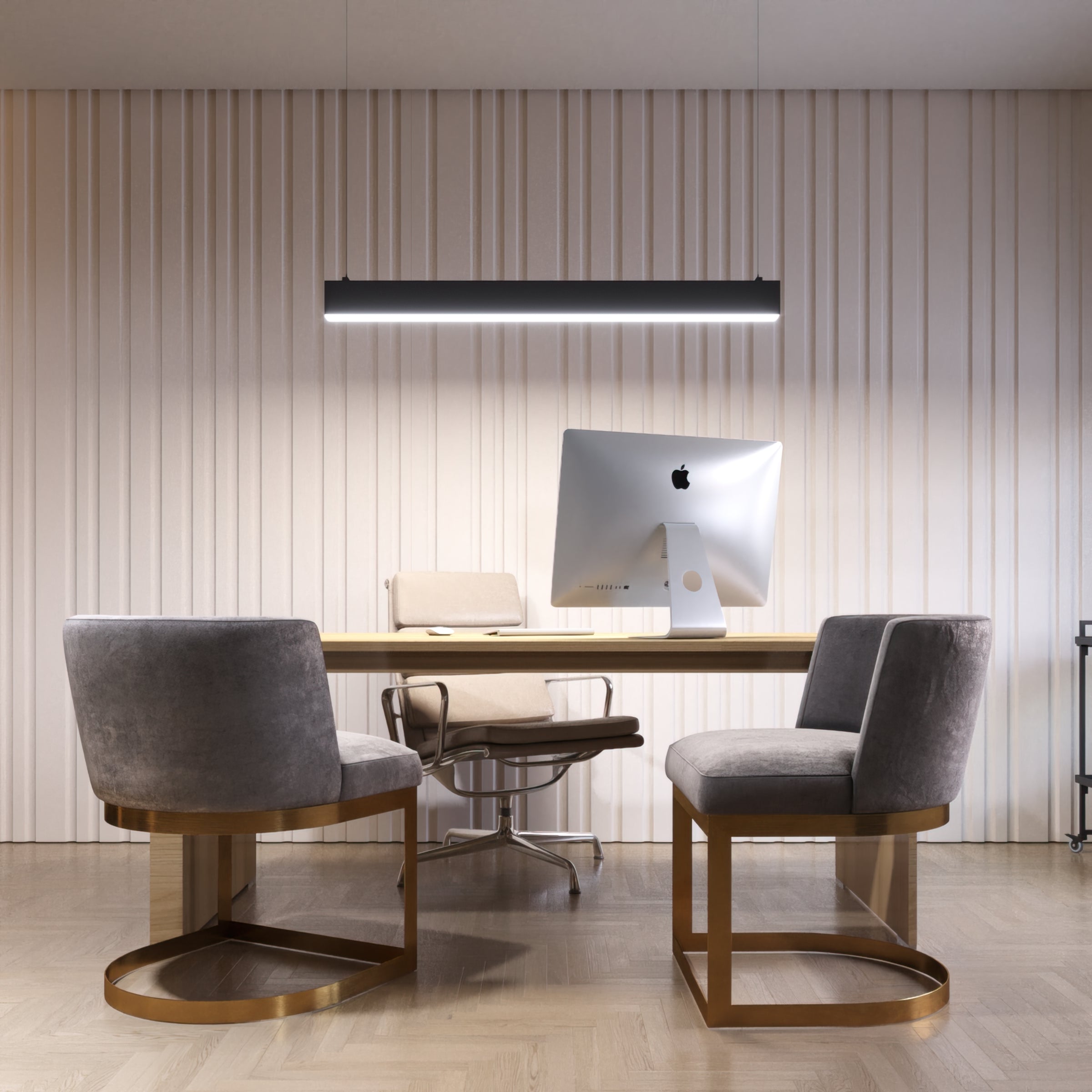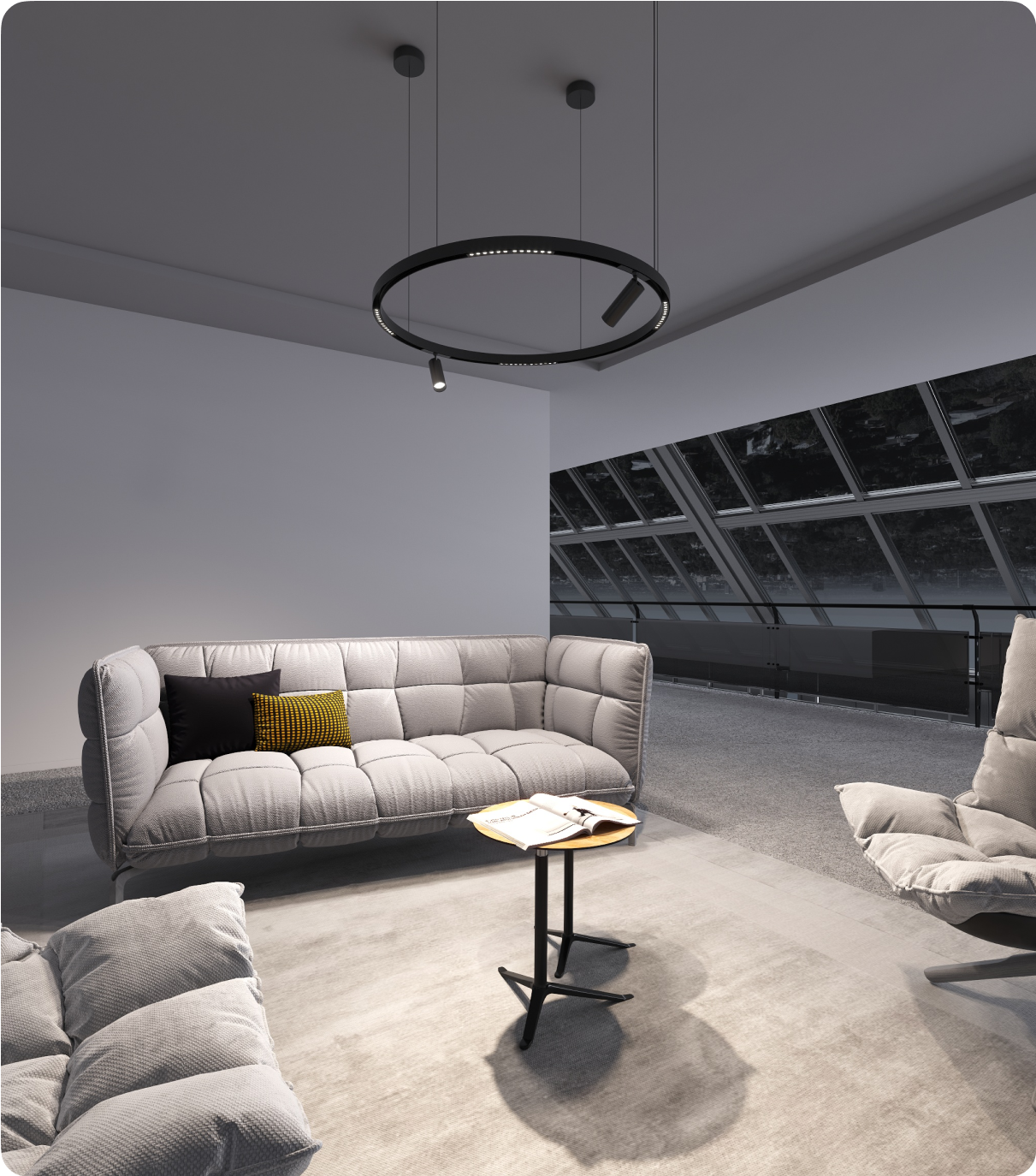Are you looking for ways to create a more inviting and ambient atmosphere in your hotel? One key factor to consider is your lighting design. Proper lighting can make a significant impact on the overall guest experience, from setting the tone in the lobby to creating a comfortable and relaxing atmosphere in guest rooms and spa areas. In this article, we'll explore some essential principles of hospitality lighting design and provide helpful tips and ideas for creating a well-lit space that guests will love.
Hospitality Lighting Design Principles for Different Areas
Foyer & Lobby
The lobby of a hotel is often seen as a mere passageway to other areas of the building. However, it is a crucial space as it is the first thing guests see, setting the tone for the hotel. Proper lighting is essential in conveying the desired image to guests, whether it be a dominant light at the reception desk or a warm and inviting light that encourages guests to lower their voices and appreciate the intimacy of the space. Lighting should also guide guests and make it easy for them to recognize the reception and storage areas, creating a softer atmosphere. In addition, the light in the hall should be balanced between vertical and horizontal lighting to soften the shadows produced by the luminous bodies that go to the reception counter.
Guests Rooms
Proper lighting is crucial when designing hotel guest rooms, and the lighting in guest rooms is just as important as the hotel lobby lighting design. Downlights, such as linear LED lights, are a good option for essential ambient lighting, and it is even better if they can be dimmed. Accent lighting can make the room stand out in guests' memories. Bedside lighting is also essential and can be achieved using LED reading lights mounted on the wall, headboard, or table lamps. Placing the switches by the bed is essential to ensure guest comfort. Task lighting should also be provided for any desk or sitting areas in the room, which can be accomplished with LED wall lights, spotlights, or hospitality lamps.

Bathroom
In the bathroom, lighting should focus on the mirror. Adequate lighting around the sink should illuminate the entire space, creating a dressing room effect with a maximum of 20% direct light. For common areas of hotels, customized lighting solutions can be integrated into the architecture to create exciting lighting effects. Two or more chandeliers can be used for larger spaces, while intimate spaces can use suspensions for better results.
Hallway
The hotel hallway/corridor lighting design can be enhanced with round LED lights, which can be installed in the ceiling or on the wall. By carefully considering the color of the walls, carpet or flooring, and ceiling, designers can create a cohesive and visually appealing look that enhances the overall guest experience. To achieve the desired effect, it is crucial to maintain lighting levels in the hallway that are consistent with the lobby. This typically involves using 3000-5000 Kelvin LED bulbs. One technique that can be used to improve the look and feel of the hallway is wall washing. By directing light at the walls, designers can create a smooth, even look that eliminates shadows and adds depth to the space. This technique can be combined with wall sconces to draw attention to paintings, artwork, or room numbers. By varying the lumens of the wall sconces, designers can create a visual break between the ceiling light and the wall sconces, further enhancing the overall aesthetic of the space.

Staircase
Regarding staircase lighting, it is crucial to follow the same principles as hallway lighting regarding ceiling light, but with a greater focus on illuminating the stairs. Staircase lighting is more similar to pathway lighting than hallway lighting, as the goal is to illuminate the direction of traffic and ensure each step receives the proper amount of light without flooding any particular area. Care should be taken to avoid protruding hospitality lights that could create a tripping hazard, and instead, the lighting should be flush along the mounting surface. A recommended lighting temperature of 5000 Kelvin can help eliminate any eerie or uncomfortable feelings while walking up or down the stairs.
Elevator
Elevators should be well-lit to promote a welcoming atmosphere. Commonly used in elevator lighting are small PARs, which provide the desired brightness and maintain a consistent Kelvin temperature. Brighter bulbs can make the relatively small space feel larger and more welcoming, making it a 24/7 hotel promoter. Creating a balance between brightness and temperature can treat guests well and enhance their experience.
Conference Hall
For a hotel's function room, which is used for meetings, workshops, and formal events, a flexible lighting system is necessary to accommodate various activities. In such cases, lighting can be managed using an adequate control system that all personnel can efficiently operate. The lighting design should feature energetic yet tasteful decoration that stimulates but doesn't strain the eyes of those in the area. One option is to use appliques placed at various points on the walls to create a practical and minimalist look.

Restaurant / Bar
The lighting in a hotel's restaurant and bar area creates a distinct atmosphere for each space. Staff walkways are typically brighter, while a soft, warm hue is preferred for dinner to create a relaxing and intimate atmosphere. Abundant natural lighting or brighter and more stimulating shades may be used for breakfast and lunch. The bar should have an enveloping and relaxing atmosphere, without lights that can dazzle customers. LED systems with color changers can create various visual effects, especially if the target audience is younger.
SPA and Wellness Area
When designing the lighting for a hotel spa, it is essential to separate this area from the rest of the building because it requires special attention. The most common mistake is to add too many light sources, which risks compromising the fundamental goal of the spa: the relaxation of customers. In this area, attention should be focused on the quality of light rather than the quantity. The environment should be welcoming and comfortable and help customers feel even more relaxed than in other areas. Guests in the relaxation area do not need bright lighting; a few lux (lumens per square meter) are sufficient for people to move around safely. Therefore, the light should be soft and indirect, without any glare. Lighting between 10 and 20 lux is sufficient to meet customer needs. Additionally, warm color temperatures between 2700K and 3000K are recommended. With new LED technologies, it is possible to have an adjustable lighting system that customers can personalize in quantity and color.

Helpful Tips for Hotel Lighting Planning
Use Natural Lights
Natural light is an important consideration when designing hotel spaces. Incorporating natural light whenever possible enhances the room's ambiance and contributes to the overall productivity and well-being of guests. Natural light is becoming increasingly popular in some spaces as attendees perceive rooms without daylight as unwelcoming and are less likely to book them. In addition to enhancing the ambiance, natural light can also help save on energy costs by reducing the need for artificial lighting.
Choose Fixtures According to Space Needs
In business or budget hotels, every bit of space is maximized for utility, sometimes resulting in smaller or fewer windows. Close-proximity furniture arrangements can exacerbate the situation by making guests feel cramped and creating a depressive mood that can make the hotel appear cheap and second-rate. While the obvious solution is to add lights, there are two things to consider: the lack of free space and the color of the light. To avoid clutter, floor lamps, and desk lamps should be avoided, and instead, wall-mounted lights should be incorporated into the hotel's interior design. To create a spacious and airy feeling, the light should be as close to natural light as possible. Artificial light runs the risk of making a space seem even more cramped.
Remember Functionality
In hotel interior design, there are specific requirements for lighting beyond simply providing visibility. There are seven types of lighting needed for optimal hotel lighting design: general ambient lighting for the room and bath to set the mood, task lighting for reading or working, mirror lighting, overhead lighting in the bath area to ensure safety, accent lighting for creating atmosphere, closet lighting, and subtle night lights for guests to navigate safely without harsh lighting.

Pick the Right Design Option
A large and eye-catching chandelier can enhance the lighting design of a hotel. This is where the hotel and its designer can make a statement and showcase their identity through their lighting choices.
Plan Light Layering
Layering lighting in a hotel is important for creating a well-lit space. It involves using ambient, task, and accent lighting. Ambient lighting provides overall illumination throughout a larger area and can be achieved using LED pendant lights or recessed lighting. Task lighting behind reception desks can help employees work better. Finally, accent lighting can highlight unique features, such as a sculpture or an architectural element, making the hotel or restaurant stand out. Using these three types of lighting can create a well-lit space.
Use Energy-efficient LEDs
Hotels, even small ones, can raise significant energy bills due to the constant use of lights in public areas and guest rooms. This is because lighting accounts for a large portion of the total energy consumption of a hotel. By using energy-efficient LED bulbs, hotels can significantly reduce their energy consumption and annual bills. LED bulbs are more efficient than traditional incandescent bulbs because they use less energy to produce the same amount of light. In addition, LED bulbs last much longer than traditional bulbs, reducing the need for frequent replacements and thereby saving on maintenance costs. By making this simple switch, hotels can save money and reduce their environmental impact by lowering their carbon footprint.

Place Ceiling Lights
The ceiling's impact on the lighting in a room is significant since it affects how light reflects and bounces around the space. Consider choosing hospitality lighting fixtures that complement the ceiling, such as long pendant lights that hang from high ceilings or lighting that create the illusion of a taller ceiling in low-ceilinged spaces.
Direct the Light to Important Areas
When guests first enter a hotel lobby, they must draw their attention to the reception desk. A well-lit reception desk provides a clear direction for guests and creates a warm and welcoming atmosphere. Additionally, subtle illumination can highlight seating areas, creating a relaxing atmosphere for guests. This can be achieved through warm and indirect lighting, highlighting the art or other decorative elements in hallways, or creating a cozy atmosphere in hotel rooms by illuminating small nooks.

Think about Color Temperature
Choosing the right color temperature for hotel lighting is essential, as it can significantly impact the overall atmosphere of the space. Color temperature is rated in Kelvin units, with higher numbers indicating more fabulous light and lower numbers indicating warmer light. For hotel room lighting and other domestic settings, it is recommended to use warm white light with a Kelvin rating between 3000k and 3300k.
Don't Leave the Hallways Dark
Poorly lit hotel corridors can make guests feel uncomfortable and create a negative impression of the hotel. It is essential to provide proper lighting to avoid giving guests the wrong impression, even if they do not believe in ghosts. Lighting for hotel can be creatively designed to serve as focal points within passageways as long as it fits the theme and interior design.
Design a Smart Lighting Scheme
To provide a more comfortable and memorable guest experience, it is crucial to consider that some guests may prefer brighter lights. In contrast, others may prefer lower brightness levels due to light sensitivity. Therefore, offering lighting options with brightness control can accommodate a variety of guest preferences.

Make it Safe
It's vital to have exit and emergency lighting in hotels to ensure the safety of guests and staff in case the general lighting system fails. These lights should direct people to the nearest exit and provide a sense of security until the main lighting is back online. Regulations at the state and local levels require hotels to have both exit and emergency lighting, and it's essential to check with these regulations to ensure compliance. Emergency backup lights should be present in all exit routes, such as hallways and stairwells, and in internal rooms like guestrooms, bathrooms, and large closets.
Keep it Simple
Lighting systems in guest areas should be simple and easy to navigate, including fittings that have dimmable light switches.
